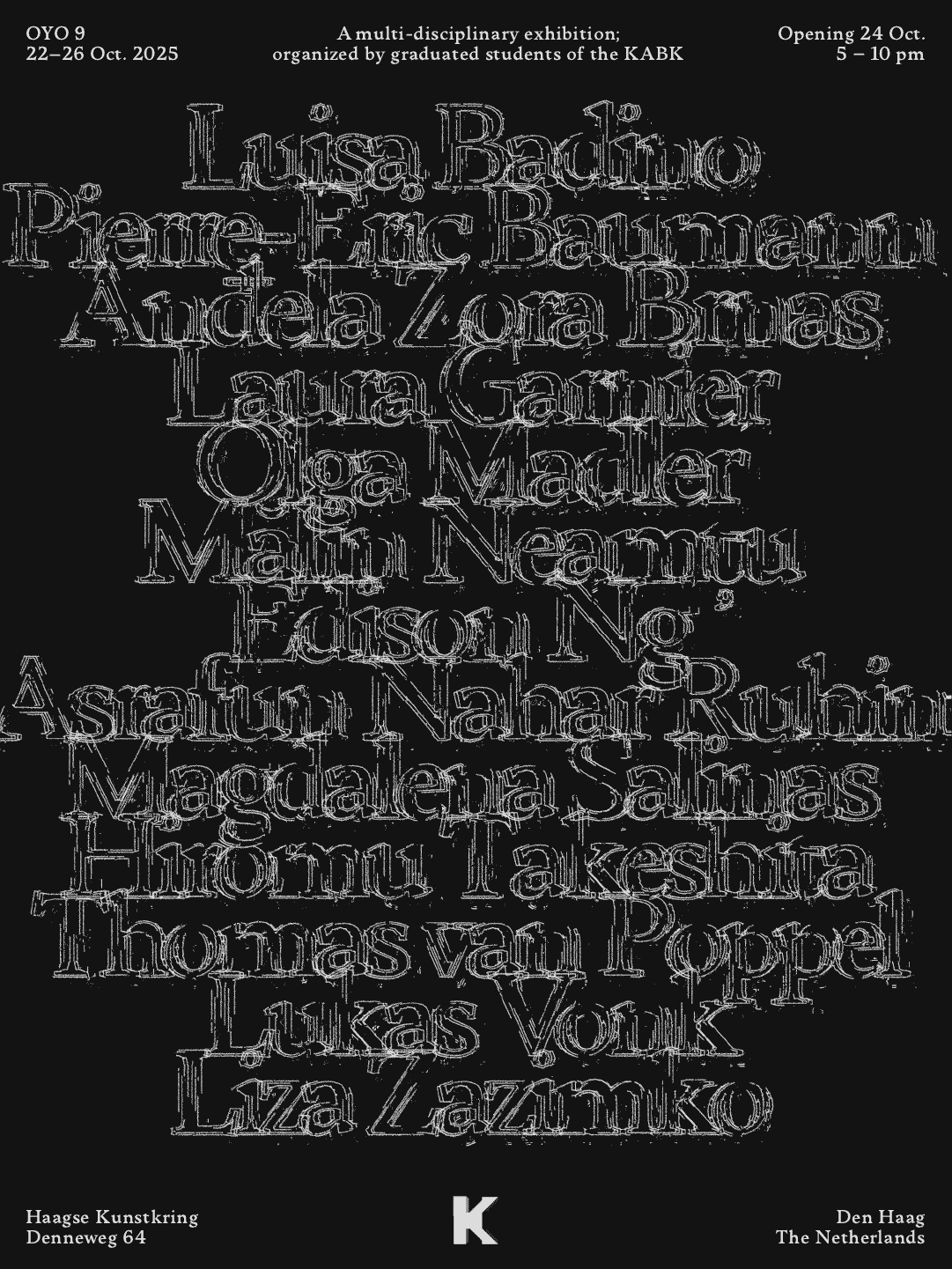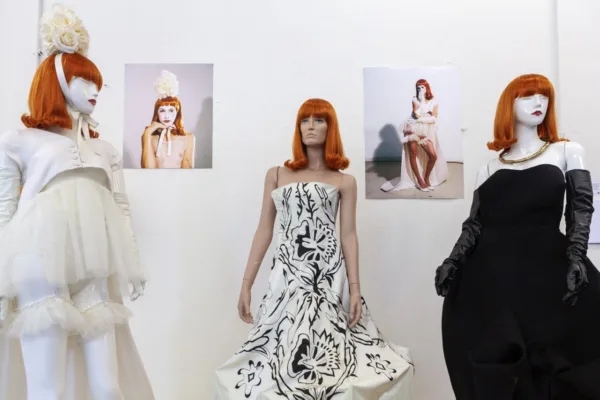Peter van Langen (Graphic Design, 2019) designed the campaign for the Graduation Show taking place from 3 to 8 July. "Together, the individual voices form something collective, a new story that represents this graduation year."
Like previous years, alums pitched an idea for the campaign for the Graduation Show. In this article, Peter tells more about the process, concept and about his practice.
Can you tell a bit about yourself?
My name is Peter van Langen, I’m an Art Director and Graphic Designer based in Rotterdam. I work across a range of projects, from art direction on album rollouts for artists and bands, to visual identities for cultural organisations and selected commercial clients. Outside of work, I’m often running, hiking, or diving into new music and coffee beans.
How is life for you after graduating? Is it what you would expect it to be?
To be honest, it hasn’t been as frightening or intense as people warned me during my time at KABK. I had already started freelancing during my first graphic design study, before KABK, which helped make the transition to full-time freelance smoother. That said, it’s still a rollercoaster. The biggest positive for me is the freedom, planning my days in a way that works for me. I make sure I’m outside for almost two hours every day, walking to and from my studio. I have realised that the traditional office rhythm doesn’t work for me. I need a bit more space: to work abroad, to take time off, to move around. And mainly have a certain amount of freedom in how I plan these things. Not have to sit in this desk in a huge office jungle each single day.
On the flip side, there are periods when work gets very intense. A lot of my clients are based abroad, which means dealing with time zone meetings in the evening, deadlines overnight. On the other side, this is also what allows me to focus on music-related work. In places like the United States, there’s simply more room, both creatively and in terms of budget, when it comes to album campaigns.
How would you describe your practice and how did it evolve over time?
It is always been my dream to work mainly in the music industry as a designer. Coming from a background of playing in bands, that felt like a natural progression. In the beginning, it was tough, it felt almost impossible to make a living from it. I had to juggle too many projects just to earn enough. Even though music is my biggest passion, at the end of the day, it also needs to pay my rent.
What helped me grow most was learning to say no, especially to clients with unrealistic budgets or those who didn’t really respect the work. The kind who see it as ‘just your passion,’ as if that means you shouldn’t be paid fairly.
What also made a big difference was being open about budgets with other designers. I really believe that by sharing more honestly, we can all help raise the standard and push for fairer pricing.
Saying no also helped me break into a different circle of clients, where there’s more appreciation for design, and fairer budgets. I am working with major labels like Warner Records, Sony Music, and Universal Music, and artists like Sabrina Carpenter, Calvin Harris, and Frank Dukes.
At the same time, I always stay close to my biggest passion: electronic music. I work with artists and labels like Ryan Elliott, Japanese Telecom (Dopplereffekt), and Clone Records. These projects might not have the biggest budgets, but they offer a lot of creative freedom and are very close to me when I talk about sources of inspiration.



Why did you apply for the open call?
KABK invited me to join the pitch for the Graduation Show’s visual identity. I saw it as a nice way to reconnect with the academy, a place where I spent a lot of time and that laid important foundations for my freelance career. It also felt like a meaningful and big challenge, because everyone always has opinions about design.
Can you tell about the process?
I wanted the students to be front and center in the visual identity, not turning their moment into a decorative design or something driven by trends. That meant focusing on content over style.
The final concept became very text-focused, and to make that meaningful, it was important to gather a lot of input from the students themselves, to understand what drives them, and how they use graphic design in the broadest sense. It was tempting at times to fall into the trap of not fully trusting a text-driven direction, by adding noise like images, patterns, or unnecessary shapes. For example, showing bits of student work. But I felt it was important to fully commit to the copy-driven approach in order to make it work.
What is the concept about?
The core of the visual identity is built on the voices of the students. Their words and stories literally became the typographic foundation for the design. It’s about turning personal stories into a shared narrative. Together, these individual voices form something collective, a new story that represents this graduation year.








